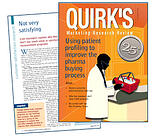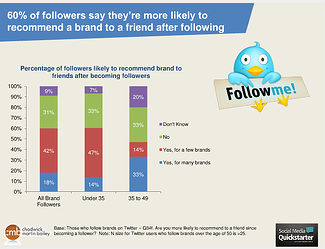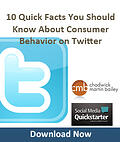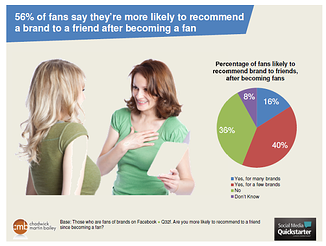Introducing “John’s Corner” 
Many times the people we think of as “Thought Leaders” seem unapproachable or intimidating, especially when they’re the Chairman of the company. Here at CMB we’re lucky to have Dr. John Martin, Chairman of CMB, Co-founder of South Street Strategy, innovator, professor, mentor, and a very approachable (and often shoeless) guy.
This month we’re kicking off “John’s Corner,” a series of articles sharing John’s 30+ years of experience in research and strategy, with a conversation with Kristen, CMB’s VP of Marketing and John about the challenges researchers face in defining goals and needs.
Distinguishing Between Goals and Needs
Kristen: Often in research we try to identify and most importantly prioritize what actually motivates people to make certain decisions. Why do some choose one product or service over another? John, tell us what you see as the biggest challenge researchers face in helping companies distinguish between goals and needs?
John: I think it starts with the language we use; the language used in market research is surprisingly messy. For example we use terms like “needs” and “wants.” However, “needs” are often used broadly to represent several types of motivational dimensions. Then we have related terms such as “demand,” “preferences,” “value,” and ”value drivers,” “decision criteria,” evaluation criteria,” “goals,” and “requirements.” We need to be more precise because this lack of precision leads to poor measurement and consequently mistakes when interpreting research findings to make precise recommendations.
Kristen: Interesting, this is what I love about our conversations. I can see this is a “hot button” for you. So I can see where there might be confusion and a danger of using some of these terms interchangeably. What can we as researchers do about it?
John: Well I think we all need to commit to “greater preciseness” and be more deliberate in our choice of language when talking about goals and motivators. This starts by distinguishing between what people aim to achieve (goals) and what will enable those goals to be achieved (needs). This requires agreement on a definition for goals which I consider to be extremely important.
Kristen: I’d like to talk a little more about the nature of business goals. Now that we have agreement around goals being the primary motivator, what’s next?
John: Accepting goals as the primary motivator positions companies as providing what people “need” in order to achieve their goals. This allows companies to take a more objective look at criteria used to gauge value or how much a proposed solution or offer will enable them to achieve their goals. So, since goals are the primary motivator we can expect a company's core brand promise or vision to reflect the goals of their target market members in order to provide the basis for engagement.
Kristen: When you say “How much an offer will enable ‘them’ to achieve their goals.” Do you mean the customer? Sounds like this approach is very customer-centric and requires companies to have an intimate understanding of customers' needs.
John: Yes that’s just it. See, the benefit of this approach will be felt by all when a company enables customers to meet their goals while enabling them to be successful (goal alignment). A focus on goals encourages companies to adopt a proactive and forward looking perspective as they establish what best they can do to help people achieve their goals.
Kristen: Going back a bit to what you said about engagement, you've just published an article in Quirks outlining the special challenges for measuring loyalty in low engagement industries like insurance. How can insurance carriers with little end consumer contact identify customer goals and position themselves to address customer needs?
John: The customers' goal is peace of mind—to sleep well at night, knowing they and their family have coverage. But historically the industry has set up barriers to engagement, by adding complex language, limiting access to information, and expecting blind trust from the customer. Changes in the marketplace mean companies are removing barriers—engaging in social media, dealing directly with customers, letting them access information on the web etc. Enabling engagement and recognizing they have to meet customer needs through understanding their goals is only going to increase.
So what do you think? Are goals on top of the motivational pile? If goals are on the top, how does understanding goals help us identify and meet consumer needs?
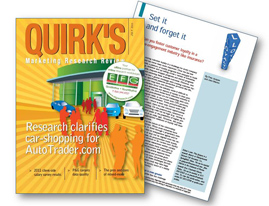 Can you foster customer loyalty in a low-engagement industry like insurance?
Can you foster customer loyalty in a low-engagement industry like insurance?
Creating customer loyalty is a challenge for every company and has never been more important. Over the last few years, a plethora of loyalty programs have emerged to build cross-selling, retention and up-selling across a variety of industries. Customer cards, frequent-shopper programs and reward programs all work toward achieving these business outcomes. However, one industry that has had a greater challenge with creating customer loyalty is insurance, specifically personal protection. Read the whole article here.
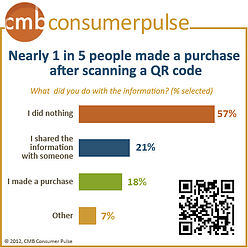 Seems like everywhere I turn I see a QR code. From product packaging to billboards in the airport, those funny little black and white designs are popping up all over—even on T shirts. So we set out to ask consumers what they think about the 2D bar codes known as Quick Response or QR codes in our latest Consumer Pulse: Scan Me-9 Things To Know about Consumer Behavior and QR codes.
Seems like everywhere I turn I see a QR code. From product packaging to billboards in the airport, those funny little black and white designs are popping up all over—even on T shirts. So we set out to ask consumers what they think about the 2D bar codes known as Quick Response or QR codes in our latest Consumer Pulse: Scan Me-9 Things To Know about Consumer Behavior and QR codes.![]()



